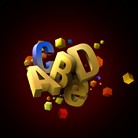Language Disorder: What Is It, and How Does It Affect Your Students?
 Language disorder is one of those subjects that has always been difficult to define.
Language disorder is one of those subjects that has always been difficult to define.
Let's briefly have a look at some of the definitions that researchers (and speech-language pathologists) use, and have used in the past.
We have language impairment, language delay, language disability, language learning disability, and language deviance.
The term I'm most comfortable with and use most often is language disorder or language impairment.
The term disorder suggests that there is a difference between a child with language difficulty and children of the same age.
The terms disorder and impairment are relatively neutral, but also very clear.
In contrast, Language delay (a term I have used in the past) can be interpreted any number of ways, and can cause confusion, particularly when used in relation to older students.
The confusion is especially true when the term delay is presented to parents of a child with language disorder. Parents are often searching for an explanation as to why their child is not learning at the level they expect.
The problem with the term delay is that it's often interpreted by parents to mean that their child will eventually 'catch up' to their peers.
Clinicians may unwittingly create an expectation, in family members and teachers, that the student, with some intervention, will soon perform as well as other students in their classroom.
This is an expectation that many children with language impairment simply are unable to live up to.
Language delay may be an appropriate term to use for pre-school children. And yes, some pre-school language delayed kids do eventually 'catch up' to their peers.
However, if a child continues to have problems with language throughout their school years, it has been my experience that the impairment is not simply language delay.
Definition of Language Impairment
 language impairment can be defined as either an acquired or developmental disability that is identified by deficits in comprehension, production and use of language.
language impairment can be defined as either an acquired or developmental disability that is identified by deficits in comprehension, production and use of language.
A defining characteristic of language disorder is that it exists in the abscence of intellectual disability. The child has normal intelligence, but difficulty with language.
The World Health Organisation defines impairment as an abnormality of structure or function, and disorder as the functional consequence of the impairment.
Language problems affect many areas of learning.
One of the more identifiable characteristics of language impairment is the child who can't seem to follow instructions in class.
Then there is the child who can't form clear and complete sentences, verbally or written. Often it's because the child has a poor vocabulary, or hasn't properly worked out the rules of grammar.
Children with language difficulty find figurative and interpretive language very tough to understand. These are the children who don't 'get' jokes very well, or have great difficulty understanding metaphor and simile.
The problem with decontextualized language
Language impairment affects both
oral and
written language. The problem becomes more identifiable when the child is expected to make the shift from
contextualized language
to the greater demands of
decontextualized language.
An example of contextualized language is a child learning about items in a kitchen by helping mum dry the dishes. The child is asked by the mother to name the items that he/she puts away in the cupboards.
Language learning takes place in a contextual environment.
Contrast that with decontextualized language, which is the language of the classroom. For example, a teacher may ask,
'What is the capital city of France?' A child may not know the answer because it could be new information, so will need to look up the answer in a book.
The point is this, decontextulized language is much tougher to learn than contextualized language, because the child has to learn new information, mostly
without a supporting context.
Children with language disorder struggle mightily with decontextualized language. They are at a big
disadvantage as soon as they step into the classroom, from prep onwards.
The problem increases as the child moves through the grades, from early years to the later primary school years. Decontextualized language becomes more common and established, and children are expected to cope with its demands.
For those of you who wish to explore further, language impairment can be divided into two
separate, but linked categories:
receptive
language disorder and
expressive
language disorder. Another area on this site with useful information is a page devoted to
working memory.
Click on the above links to learn more.
How are students with language difficulty identified and assessed?
Many language impaired students are initially identified by their class teacher. Other students may have been identified by speech-language pathologists as part of pre-school screening and their language difficulties are often known in advance.
Some school districts have prep (year 1) screening programs, organised by district speech-language pathologists. The screenings identify students that may have language impairment.
Students suspected of having language and learning difficulty are referred to school support services.
Students are then assessed informally and/or formally by a speech-language
pathologist. The most common tool of assessment is a standardized language test.
For instance, the CELF-4 (Clinical Evaluation of Language Fundamentals)
examines, in some detail, a student's ability with decontextualized language - both
receptive and expressive - and also their
metalinguistic awareness.
How language impairment affects students.
As stated in
What is language?
language skill underpins pretty much all academic learning.
A child's language skills does, to a large extent, ordain how well that child learns within the school environment.
Language impairment often affects students' academic performance in the areas of
vocabulary development
, the abilty to listen to instructions, reading (decoding) and reading comprehension.
If a student has
pragmatic
language impairment they may have difficulty making and keeping friends. This is an unfortunate result of a child's lack of intuitive knowledge about social rules and social conversation. Sadly, these children can often be found playing alone at lunch and recess.
Can we can really imagine or grasp what it must be like to be a language impaired child at school?
The classroom must at times be a confusing swirl of activity and noise. In this environment a teacher's instructions may be become lost in the ether.
What must it be like for children who have poor phonological awareness? For children who have difficulty decoding, the written language is a laborious, incomprehensible code that doesn't make sense.
I sometimes see children with language literacy difficulties become physically uncomfortable and a look almost of panic come across their faces when I place a picture book on the table prior to beginning a
shared book activity.
These children generally have a history of reading failure. Books are too often associated with fear, frustration and defeat.
I think it's a distressing situation. Books for young kids should always be a wellspring of exploration and joy, never a cause of anxiety.
From prep (year 1) onwards the whole academic learning event becomes a series of negative experiences for children with language difficulty. Increasingly, they consider themselves 'dumb' and even lose the motivation to do well at school.
It's perhaps not
surprising that students with language difficulty often can't concentrate for long or focus on an assigned task, so are forever looking for a distraction.
Or they're the children who sit at the back of the class and don't make a peep.
References
Blank, M. (2006)The Reading Remedy. Six Essential Skills that Will Turn Your Child into a Reader. Jossey-Bass
DeKemel, K.P. (2003) Intervention in Language Arts: A Practical Guide for Speech-Language Pathologists. Butterworth-Heinemann.
Kaderavek, J.N. (2011) Language Disorders in Children: Fundamental Concepts of Assessment and Intervention, Allyn & Bacon
Paul R. (2006) Language Disorders from Infancy through Adolescence: Assessment and Intervention. Mosby
Wallach, G.P. (2008) Language Intervention for School-Age Students: Setting Goals for Academic Success. Mosby Elsevier
Content Updated 8/11
Also, please sign up for the Language Dispatch newsletter. The newsletter provides essential monthly language intervention tips, techniques and information.
The information provided in the monthly newsletters is ideally suited to be used by speech-language pathologists, teachers and parents of language impaired students.
Once you've signed up to the Language Dispatch you'll also receive a new free Idioms ebook, On Cloud Nine.
The On Cloud Nine Program features 100 context based scenarios, and a multiple choice format to effectively teach this difficult figurative language concept.
The program is very easy to use and is yours free, once you've signed up to the Language Dispatch. The program is available as an Adobe pdf download.

Return from language disorder to speechlanguage-resources homepage
Enjoy this page? Please pay it forward. Here's how...
Would you prefer to share this page with others by linking to it?
- Click on the HTML link code below.
- Copy and paste it, adding a note of your own, into your blog, a Web page, forums, a blog comment,
your Facebook account, or anywhere that someone would find this page valuable.



 Language disorder is one of those subjects that has always been difficult to define.
Language disorder is one of those subjects that has always been difficult to define.  language impairment can be defined as either an acquired or developmental disability that is identified by deficits in comprehension, production and use of language.
language impairment can be defined as either an acquired or developmental disability that is identified by deficits in comprehension, production and use of language. 
